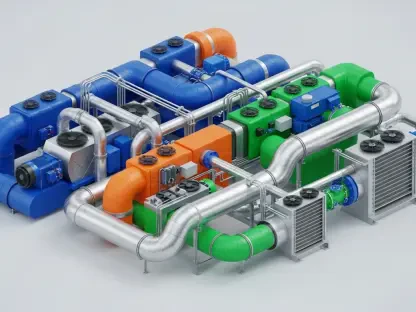In a transformative move for the industrial landscape of Uttar Pradesh, Chief Minister Yogi Adityanath has unveiled an ambitious plan to establish textile and apparel parks named after Sant Kabir, a revered figure symbolizing labor and simplicity. This initiative, announced during a high-level review meeting in Lucknow, is designed to propel the state into a leading position within the global textile market, which is projected to reach a staggering USD 2.3 trillion by 2030. By intertwining economic growth with cultural heritage, the scheme aims to foster skill development and create substantial job opportunities for the youth. The vision behind this project is not only to attract significant investments but also to honor the principles of self-reliance and hard work that Sant Kabir embodied. As Uttar Pradesh seeks to balance modernity with tradition, this bold step is poised to reshape the state’s industrial future while providing a platform for sustainable development and international recognition in the textile sector.
Driving Economic Growth Through Textile Innovation
Uttar Pradesh already stands as a powerhouse in India’s textile industry, ranking among the top exporters with a remarkable USD 3.5 billion in exports during the last recorded fiscal year, contributing 9.6% to the nation’s total textile exports. The sector plays a vital role in the state’s economy, adding 1.5% to the GDP and employing around 2.2 million people directly through traditional clusters in cities such as Varanasi, Bhadohi, and Meerut. Under the newly launched scheme, an overwhelming response has been recorded, with 659 proposals submitted through the Investment Sarathi portal, requesting over 1,642 acres of land. These proposals signify a potential investment of INR 15,431 crore and are anticipated to generate more than 100,000 jobs. Each designated park will cover a minimum of 50 acres, equipped with critical infrastructure like effluent treatment plants and facilities to support ancillary industries, including those producing buttons, zippers, and packaging materials, ensuring a comprehensive ecosystem for textile production.
Blending Heritage with Modern Infrastructure
The implementation of this visionary scheme took shape through a Public-Private Partnership (PPP) model or via a designated nodal agency, with the state government committed to providing essential infrastructure such as roads, electricity, and water supply. Chief Minister Yogi Adityanath directed officials to expedite land identification and development processes to ensure rapid progress. A special focus was placed on supporting powerloom weavers by reducing production costs and boosting incomes through measures like subsidized electricity and the potential integration of solar energy solutions. Emphasis was also placed on preserving the rich textile heritage of the state, recognizing the global acclaim of handmade fabrics crafted by local artisans. Reflecting on the initiative, it became evident that the project had successfully married economic ambitions with cultural preservation, setting a precedent for sustainable industrial growth while honoring the legacy of traditional craftsmanship that defines Uttar Pradesh’s identity on the world stage.









